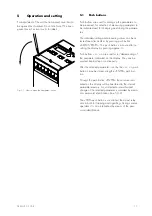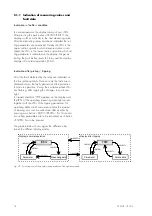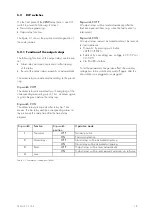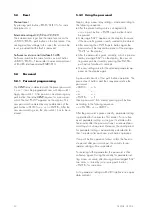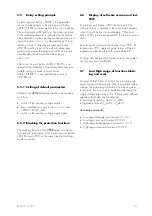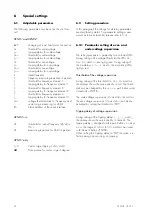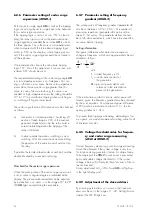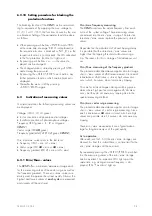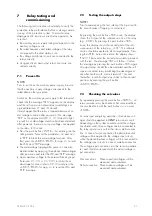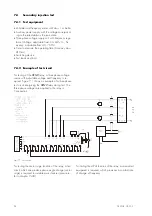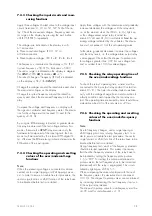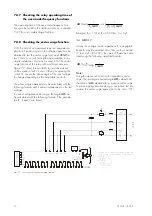
TB XRN2 02.00 E
15
Application hint
Although the vector surge relay guarantees very fast
and reliable detection of mains failures under nearly all
operational conditions of mains parallel running alterna-
tors, the following borderline cases have to be consid-
ered accordingly:
a) None or only insignificant change of power flow at
the utility connection point during mains failures.
This can occure during peak lopping operation or in
CHP stations (Combined Heat and Power) where the
power flow between power station and the public grid
may be very low. For detection of a vector surge at
parallel running alternators, the load change must be at
least 15 - 20% of the rated power. If the active load at
the utility connection point is regulated to a minimal
value and a high resistance mains failure occurs, then
there are no vector surge nor power and frequency
changes and the mains failure is not detected.
This can only happen if the public grid is disconnected
near the power station and so the alternators are not
additionally loaded by any consumers. At distant mains
failures the synchronous alternators are abruptly loaded
by remaining consumers which leads directly to a vec-
tor surge and so mains failure detection is guaranteed.
If such a situation occurs the following has to be taken
into account:
In case of an undetected mains failure, i.e. with the
mains coupling C.B. closed, the vector surge relay re-
acts upon the first load change causing a vector surge
and trips the mains C.B.
For detecting high resistance mains failures a minimum
current relay with an adjustable trip delay can be used.
A trip delay is needed to allow regulating actions
where the current may reach "zero" at the utility connec-
tion point. At high resistance mains failures, the mains
coupling C.B. is tripped by the minimum current relay
after the time delay.
To prevent asynchronous switching on, an automatic
reclosing of the public grid should be not possible dur-
ing this time delay.
A further measure could be, that the load regulation at
the utility connection point guarantees a minimum
power flow of 15 - 20% of rated power.
b) Short circuit type loading of the alternators at distant
mains failures
At any distant mains failure, the remaining consumers
cause sudden short circuit type loading of the power
station generators. The vector surge relay detects the
mains failure in about 60 ms and switches off the
mains coupling C.B. The total switch off time is about
100 - 150 ms. If the generators are provided with an
extremely fast short circuit protection e.g. able to detect
di/dt, the alternators might be switched off
unselectively by the generator C.B., which is not de-
sireable because the power supply for the station is
endangered and later on synchronized changeover to
the mains is only possible after manual reset of the
overcurrent protection.
To avoid such a situation, the alternator C.B.s must
have a delayed short circuit protection. The time delay
must be long enough so that mains decoupling by the
vector surge relay is guaranteed.
Summary of Contents for XRN2
Page 1: ...XRN2 Mains decoupling relay ...
Page 40: ...40 TB XRN2 02 00 E ...

















